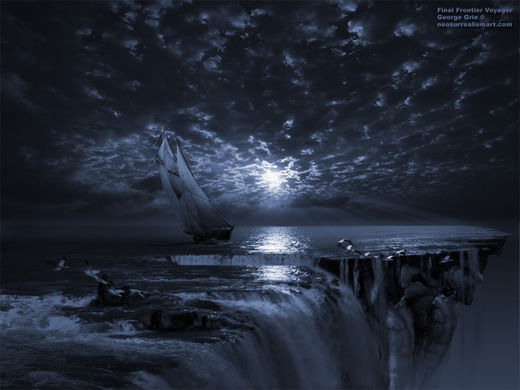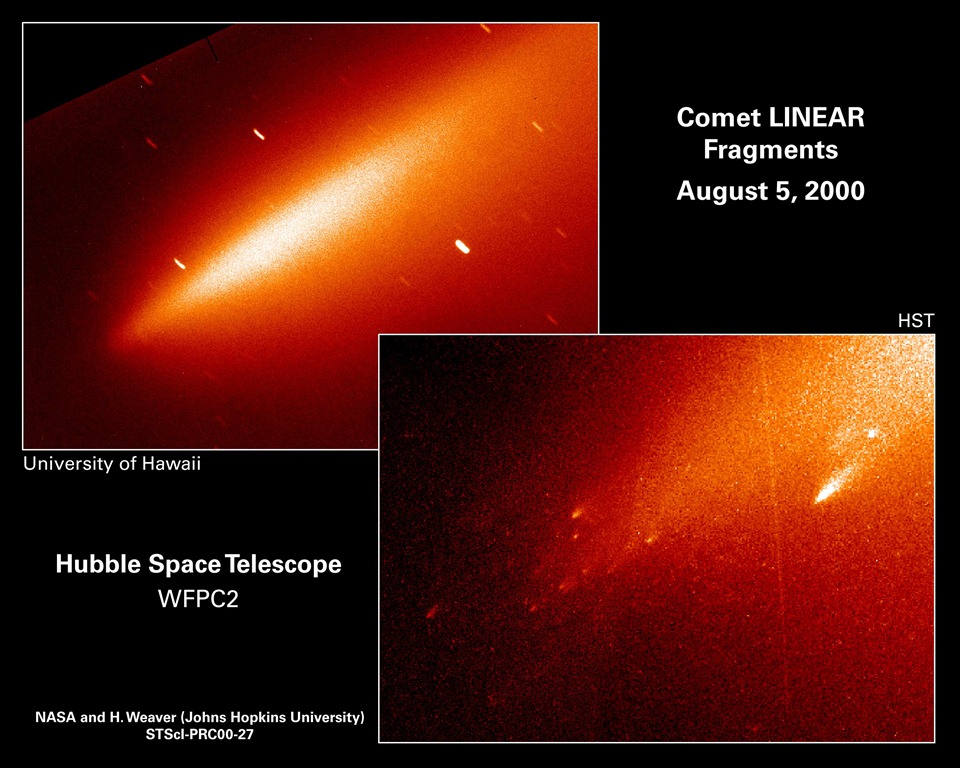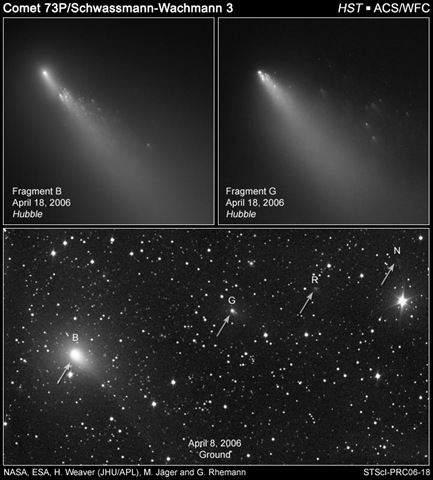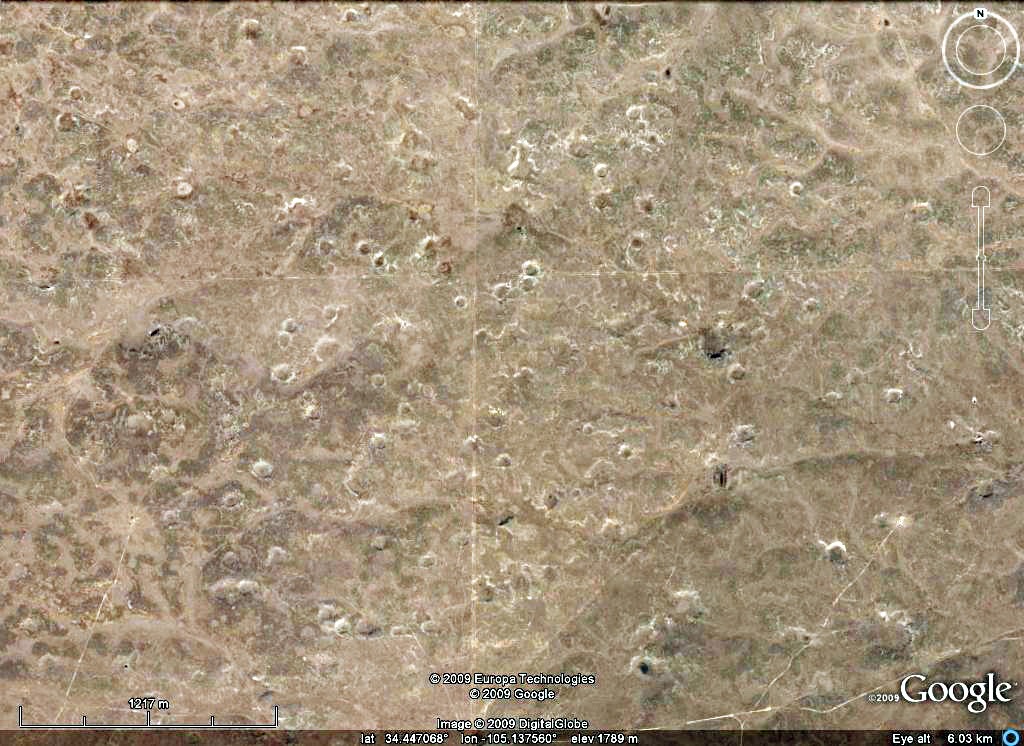Comment: For the background behind this letter see:
Bogus Science claims "Comet Theory Comes Crashing to Earth"

I've been following the latest news. And I thought you could use a bit of moral support.
It probably sounds crazy for a certified welding inspector and ironworker to retire and pursue impact research full-time. Especially since I'm pretty much a nobody. But like many others, I'm looking to identify the planetary scarring and blast-affected materials of the impact storms of the Early Holocene. A little military training in battle damage assessment from aerial photography and a copy of Google Earth goes a long way here.
And being a nobody makes me especially sensitive to ad hominem attacks. I am prepared to debate the science I propose with the big kids. But as an autodidact, an outsider and a complete nobody, I have no defense if the attacks are personally about me, and not the science. So whenever I'm reading along and one side or another, in any given debate, sinks to ad hominem, I have a policy of looking past it at the science that's being ignored or smoke-screened. I tend to mentally disqualify any debater who sinks to such small-minded tactics, and ignore further comments from them in the future. And from what I see of it, the science of yours I see smoke-screened by all the ad hominem crap in the popular press lately is, nevertheless, as good as it gets.
Like you and the others of Firestone et al, what I've been able to find pretty much flies in the face of the kind of Uniformitarian/Gradualist assumptive reasoning that's been the foundation postulate of the Earth Sciences since Sir Charles Lyell published Principles of Geology back in 1830. And regarding the events of the Pleistocene-Holocene transition, I'm ready to make the case that the foundation geologic principle in the Earth sciences, expressed in the slogan, "The present is the key to the past", is almost as naïve as flat-world theory.
The principles of Uniformitarianism, and Gradualism, only work as long as nothing sudden, and chaotic happens. Harlan Bretz was able to use aerial photography to identify, and map, catastrophic mass movement of terrain materials. And in his work on the Channeled Scablands of Eastern Washington, and the glacial Mega floods of the early Holocene, Bretz showed us that if you want to understand the planetary scarring of a geologically recent catastrophic event that's different from anything anyone's ever studied before, and more violent than anything that's ever been imagined before, that 19th century gradualist assumptive reasoning just won't get you there.
And when you crank up the violence from a glacial flood, to a continental scale, mass extinction impact event, Sir Charles's 19th century Principles of Geology becomes completely useless, and obsolete.
The biggest flaw I see in Firestone et al isn't related to your part in it anyway. It's in the objection raised by Mark Boslough that it's impossible to construct a model with a four mile wide bolide that has enough time in the atmosphere to break up completely, and scatter fragments over such a large area without making a large crater somewhere. Mark's right about that. But that doesn't invalidate the YD (Younger-Dryas) impact hypothesis. It just means that Firestone et al weren't working from a valid astronomical model for the event.
But his concerns are more than answered in Clube, and Napier's work on the Taurid Complex. In Paleolithic extinctions, and the Taurid Complex, Bill Napier points out that the breakup of comets is now a well recognized path to their destruction. And if we look at images of the fragments of Comet LINEAR, or Comet Scwassmann-Wachmann 3, both typical daughters of the Taurid Complex, we can see he's probably right. The YD impact events were the debris of the Taurid progenitor. And it was already a very large cloud of cometary debris before it got anywhere near the Earth.
When you plug a workable, and probable, astronomical model into the YD impact hypothesis it becomes a full blown theory that can predict the planetary scarring.
If you can describe a beast you can predict it's footprints. I asked David Morrison what he thought of the idea of a cluster impact event, and he was understandably skeptical. He said he thought it was "highly unlikely" But when you consider the typical fragile, often fragmented, and sometimes volatile, nature of many of the Taurid family objects we've been able to image, and study so far, you'll see that, in fact, a cluster event of small fragments should thought of as the most likely kind of catastrophic impact event. Not a single, large bolide.
And when you toss Sir Charles's unquestioned, 19th century uniformitarian assumptive reasoning out the window, stop pretending that catastrophic impact events don't happen, and go looking for the geologically recent planetary scarring of large clusters of smaller fragments. That planetary scarring is not hard to find.
I'm staring to feel like the outside observer in the story of the blind man and the elephant. And I see a few great scientists bickering, and seemingly disagreeing, who are all correct.
In the geophysical world according to me, Firestone et al were right. The YD was caused by an impact event. But they were mistaken, in that they didn't realize that it wasn't a single large bolide when it first hit the atmosphere. They also didn't realize that the Great lakes region was only one of two major impact zones. The other was central Mexico, and much of the American southwest. In the final analysis I think it will be determined that they were too conservative in their estimate of only 109 megatons of destruction.
I think we can also show that Clube & Napier were right that the parent comet was the Taurid progenitor. They put the estimate at something like 1.1 billion tons that impacted in those multiple fragment impact storms as a "reasonably probable" event. They are correct that the most probable scenario for a catastrophic impact event is a large cluster of smaller fragments. And not a single large bolide.
Bill Napier told me that he had a problem with the figure of temps as high as 107 °C. He said that even if something hits at 30 km/s, and 100% of it's kinetic energy was translated to heat in the atmosphere it's hard to get more than 105 °C. But when you think it through from the perspective of a large cluster of fragments like the fragments of comet linear, then you get to a situation where only the first fragments to fall actually fall into cold atmosphere. The rest are falling into the already superheated impact plumes of the ones before them. And they just crank up the heat. The temps given in Firestone et al don't seem such a stretch when you look at it like that.
Finally, Mark Boslough, and Horton Newsom are correct about the geo-ablative potential of large airbursts.
The blast effected materials of a geo-ablative airburst are similar in form to a pyroclastic flow. But where the motive force during the emplacement for a volcanogenic flow is gravity, the motive force during the emplacement of a formation of airburst melt is the ablative winds of the airburst. In both cases, and while in motion, the particles, and fragments of rock, are in atmospheric suspension, in a fluidized flow, or density current. But the different motive forces involved result in different patterns of movement, and flow. And those patterns are as visually distinct as the differences between dogs, and cats.
Forensically speaking, it doesn't matter if it's volcanogenic, or exogenic. As a component of a pyroclastic density current, that stuff is the blast effected material of an explosive event. And if you want to understand an explosive event, you begin by studying the motions of the blast effected materials.
When you find orphan deposits of ignimbrites in pristine condition, and the source remains a mystery. And from a high altitude you see wind-driven patterns of movement, and flow, like the debris laden froth, and foam, on a storm tossed beach, you've found the footprints of a geo-ablative monster.
Geologically the Chihuahuan ignimbrites are almost completely unstudied. And less than 100 miles along the highway between Chihuahua City, and El Paso has even been mapped. But in north central Mexico, and the Sierra Madre Occidental mountains you will find more than 350,000 cubic miles of pristine ignimbrites that look like they just cooled last year. Less than 15% can be attributed to a volcano. And the 'Orphan' materials all display wind-driven patterns of flow in their emplacement. And the reason that generations of geologists haven't been able to locate a volcanic system to blame all that stuff on is because it didn't come out of the ground. The direction of flow is as legible as spilled paint in a driveway. The source locations are the simply the bare areas behind the flows.
I doubt that I'll live long enough to see the Earth sciences toss Sir Charles's obsolete uniformitarian conditioning. But the planetary scarring of the YD impacts is only a few thousand years old. The emplacement of the pristine blast effected materials can be read at a resolution of better than 1 meter per pixel. And it's not hard to spot. Except by those who can't believe in catastrophic events, and won't look.
In spite of the hype of the popular press, I see the scientific legacy of you, and your colleagues, as having a comfortable place in the History books.
Simply because you were right.
Deepest regards,
Dennis Cox






Much thanks to the team at SOTT.net for mirroring this. But there's a problem with the exponential notation in the post above compared to what I wrote.
109 megatons should read as 1,000,000,000, or ten to the 9th Megatons destructive force.
Sometimes you have to say the full number: That's one million-billion tons of TNT, not just one hundred and nine million
105 should read as 100,000 degrees celsius, or ten to the 5th.
And 107 should read as 10,000,000 degrees celsius, or 10 to the 7th